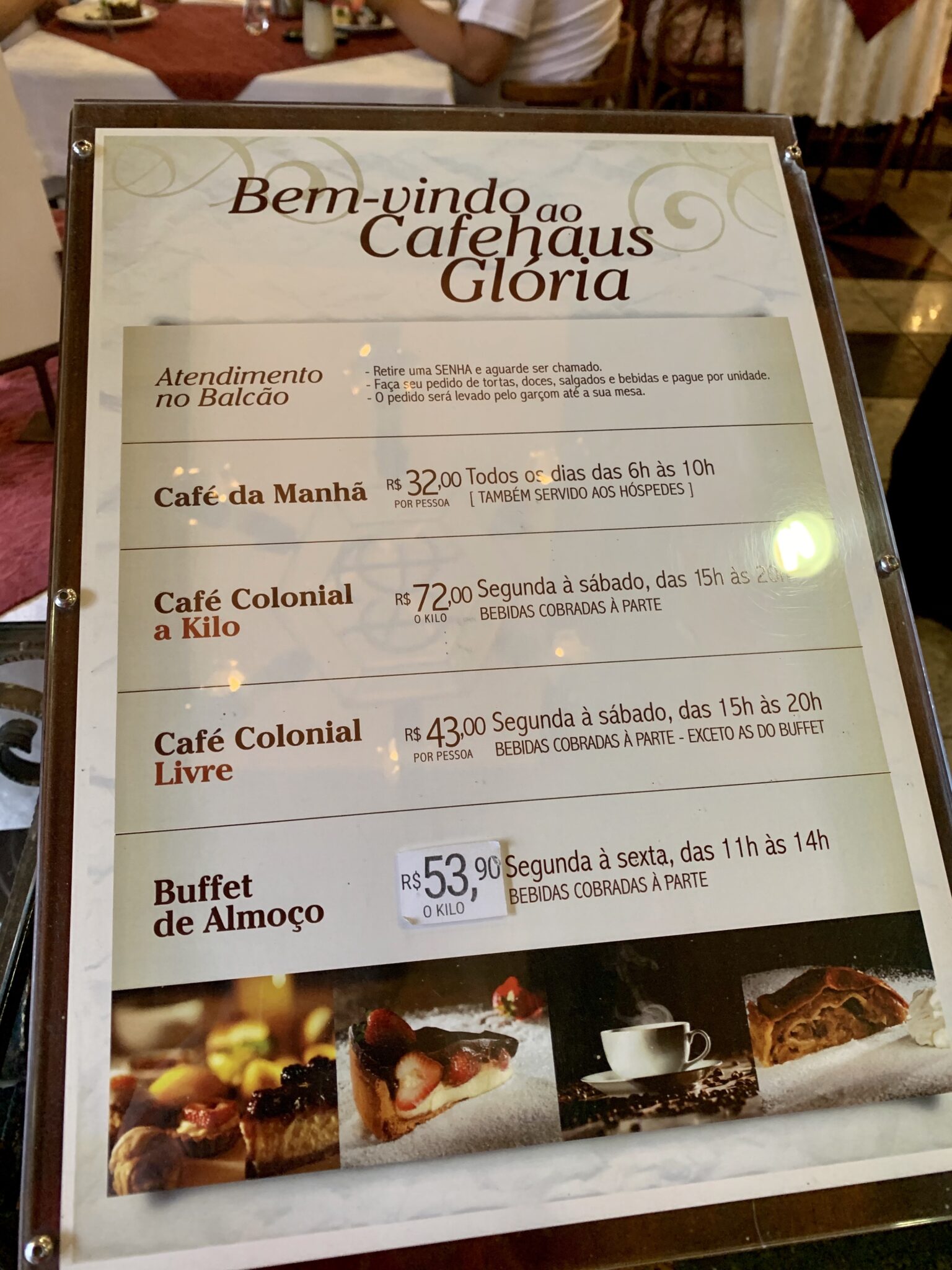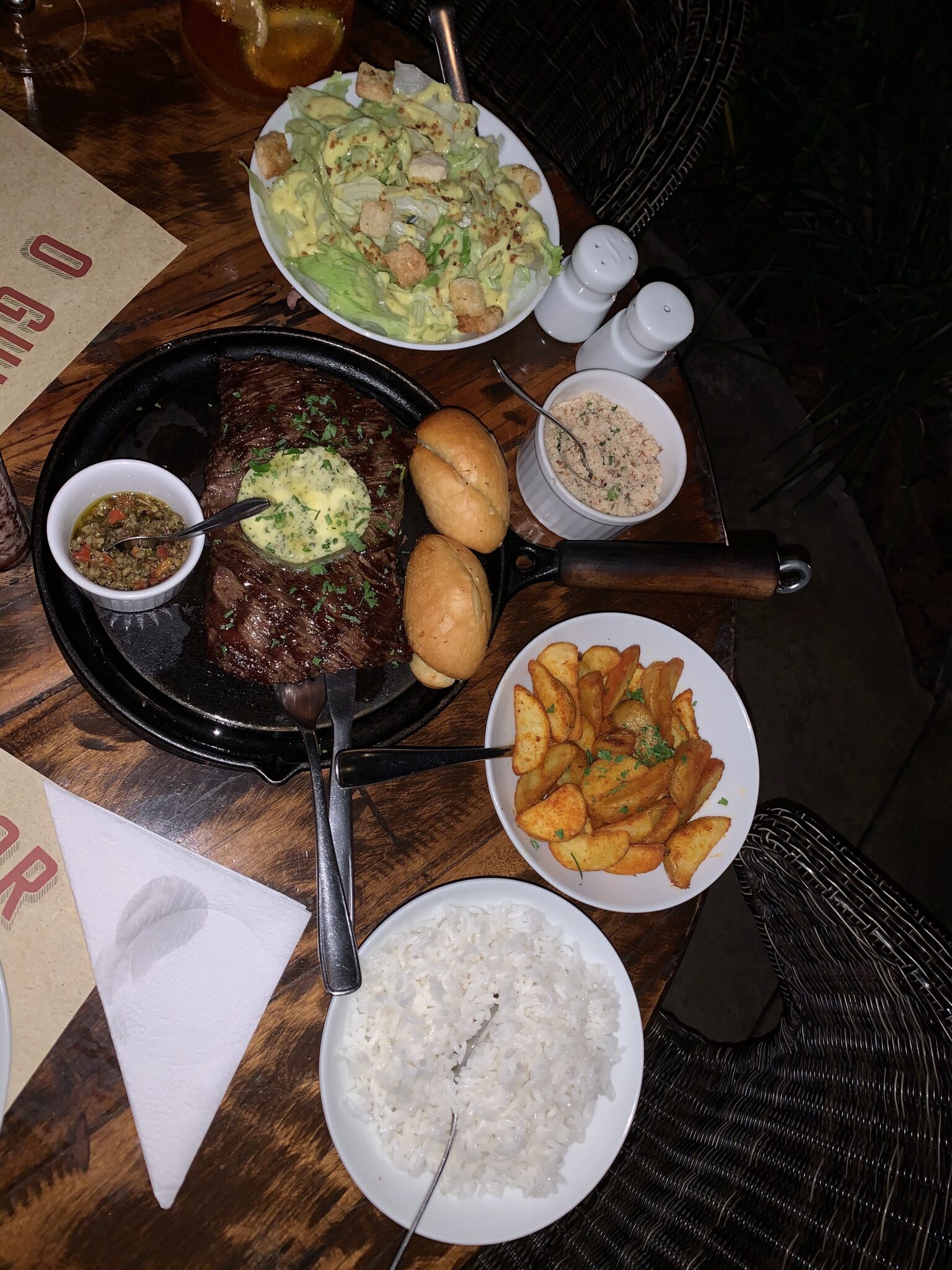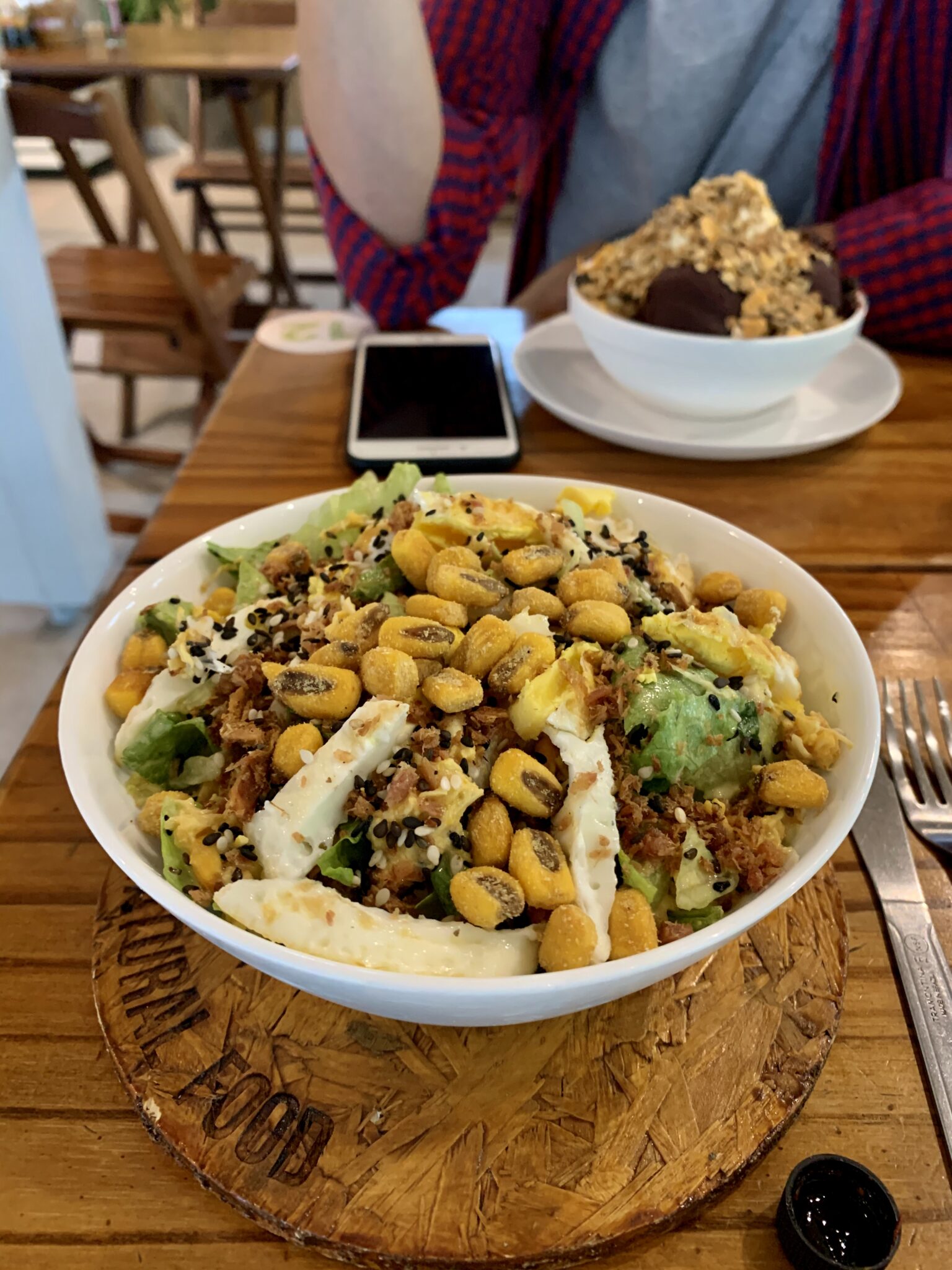Eating etiquette varies globally. There are subtle norms that can be difficult for travellers especially to catch during short visits. And, there are easily visible differences in how people consume and go about food that can be impossible to miss if they come across as unfamiliar to someone.
Brazil as a nation is hugely diverse. Food preferences and types and relationships with cuisine vary across the country from Indigenous communities’ original use of native plants (like the cashew), techniques brought over as a result of Transatlantic slavery, and of course, colonial Portuguese fishing and shipping.
As a disclaimer, this post will centre mostly on eating culture in southern Brazil with references to other regions. I will touch on general trends and habits throughout the country still, but it is impossible to brush Brazil with one colour, especially a southern one.
“The Girls are Fighting”

(Photo credits by PintsizedPioneer)
In the north, Indigenous influence in food preparation and flavours (full of spice) is prevalent. However, in the south of the country, particularly in the areas here that have had more European immigration and colonisation, this spiciness is not as familiar. Moreover, in Bahia to the northeast, there are more African techniques and cooking styles including the emergence of a favourite dish nationally now, known as acarajé (fried black bean fritters).
These foods and the techniques to create them might not be regular in kitchens of restaurants or the home in the south if one has not moved here from the north or northeast. The national dish – feijoada – a rich bean and pork/beef stew – might be eaten, but it is not a staple like perhaps in Rio de Janeiro (emblematic of southeastern cuisine).

(Photo credits by Thomas, the Cancer ♋️)
Smaller nationally popular fare like coxinha (fried soft-filled pastries) and pão de queijo (cheesy bread puffs) are widely eaten in all regions due to ease, convenience, and taste. And, interesting, in some more rural regions in the south, there is still some Indigenous influence in food culture particularly in ranching spheres with the presence of chimarrão (herbal tea in carved gourds) as a traditional beverage.
There is no one way to eat Brazilian food or experience it. Local food ultimately often reflects the cooking of the home that represents the history, ethnic backgrounds, and survival and dominance of certain groups; food is a reflection of demographics. Unfortunately, (petty) regionalism and rivalries exist between states here, and it can extend to eating and flavouring as well.
Simply, food is delicious, but complicated in Brazil.
The Basics: Santa Catarina

(Photo credits by Thomas, the Cancer ♋️)
As mentioned prior, I spent the majority of my time in Brazil in the city of Blumenau in Santa Catarina. This city has had huge amounts of historically German and later Italian immigrants, bringing their respective cuisines with them.
As a result of these factors, local cuisine in the region reflects a preference for traditional central European staples (ie krauts, preserved meats, sausages) and also hearty pastas. Eating on the coast like in Balneário Camboriú, one will encounter a wider range of seafood dishes with inspiration from Portuguese roots, particularly the Azores region from where immigration was heavy at one point. Inland cuisine will vary from coastal selections in most places obviously.

(Photo credits by PintsizedPioneer)
Commonalities in style of dining however remain consistent between these areas as well as throughout much of the country. Common ingredients also pop up but just with different preparations, namely rice, beans, and cassava: major agricultural and modal ingredients.
Buffet-style dining is common as a low service cost means of distributing food and eating in Brazil. Many of these self-serve eateries will charge by weight or have a blanket all-you-can-eat cost, depending on the formality of the establishment and type of food. For lunches, it is really efficient, especially for the working Brazilian. And, culturally, lunch is a major meal to enjoy. Technology has also greatly influenced how businesses operate and restaurant flow.

(Photo credits by PintsizedPioneer)
At a restaurant, do not be surprised if a server initially provides an electronic card/panel to record one’s orders and food weight as it accrues for payment later at a checkout station. This method is common at bars too, which facilitates faster service in some ways.
At clubs, advanced payment for drinks might be done prior to going to the actual bar to receive them. A receipt after payment will be dished out to you to hand to the bartender at a different location to also aid in faster drink service and not create huge lines.
So, essentially, 1) go to pay and order, 2) cross to the drink bar, and 3) give your receipt to the actual bartender to make your drink(s). Efficient!
Steaks On!

(Photo credits by PintsizedPioneer)
Roadside eateries between cities are also quite common in the south and rural areas.
Churrascarias are advertised heavily on highways, which are BBQ houses that serve rich local meats often with traditional sides like farofa (a fried cassava dust), grilled vegetables, and arroz carreteiro (a rich savoury rice common in the south). Many people might imagine attractive, well-dressed men bringing meat tableside to cut pieces for patrons, which is typical in the rodizío style. However, more upscale churrascarias may not provide this specific service.

(Photo credits by PintsizedPioneer)
In Blumenau, Figuiera Restaurante (‘fig tree’ in Portuguese) is an elegant churrascaria with a wide selection of meal options that is quite affordable for a good date night. It has indoor seating, an adjacent playground for kids, and a koi pond. Kids often through farofa into it for the fish!
This example is not typical of the genre, but the food they serve is. I went here with Thomas, the man I was visiting in the city, for a nice night out. I would highly recommend this place, but catch an Uber here.
Roadside eateries might serve also local favourites like pastéis (savoury pastries) which originated in Brazilian cuisine from São Paulo or also caldo de cana. A bit of a mislead, caldo de cana is not really a caldo ‘broth’, but a cold drink made from sugarcane. It is a popular, refreshing beverage in hot climates including summers in the south and a rather cheap treat. It also tends to come in different flavours with hints of pineapple or other tropical fruits.

(Photo credits by PintsizedPioneer)
As one can see, Brazilian cooking and food does not revolve entirely around meat (although, it does a little bit in the south to be honest). And, while meat is a staple for most, about 15 percent of Brazilians are either vegetarians or vegans, which is a percentage that is rising.
Going Green
Brazilians take great pride in also the amount of produce that the country possesses, in particular, its tropical fruits.
Flavours like pineapple (infamously abacaxi from Old Tupi in Brazil, but ananás in Portugal) and passion fruit (maracuja) are popular amongst Brazilians and found on most menus as options that feature desserts. These fruits also tend to flavour the national drink, well, alcoholic drink – caipirinha – what with the powerful and delicious cachaça spirit traditionally. The other national drink would be coffee often with a good amount of sugar.

(Photo credits by PintsizedPioneer)
It is probably impossible to discuss Brazilian food without mention of açaí too. Popularised outside of Brazil in the mid-2000s, this “superfood” (all food is super) is a typical treat that originated in the north of Brazil.
The frozen berry snack is especially refreshing in their hotter climate. Now, it is also beloved as a staple throughout the country. However, ways of eating it are mixed, sometimes literally.

(Photo credits by PintsizedPioneer)
In the north, açaí is traditionally sometimes eaten with meat. Yes, meat, red meat. For southerners, this combination is somewhat unheard of. The sweeter combo-variety is far more popular there. A popular Brazilian topping that might perplex foreigners at first is paçoca, a delicious, rich candy that becomes a powder that tops açaí across the nation today. It tastes exactly like dehydrated peanut butter, but is incredibly fine and silky even.

(Photo credits by PintsizedPioneer)
Interestingly, paçoca originally was developed in the countryside as part of Caipira (rural) cuisine in the southeast of Brazil (in São Paulo and Minas Gerais). The name is unsurprisingly of Indigenous origin again and comes from the word ‘to crumble’ in Tupi, which is poetically appropriate.

(Photo credits by PintsizedPioneer)
In Blumenau, I had my first açaí ever! And, it was fantastic. I now understand the hype. Sadly, I will have to overpay for it here in Canada …

(Photo credits by PintsizedPioneer)
Brazilians are rather health conscious as a whole, which partially stems from the richness and freshness of their cuisine.
For many who come to North America, the sight of our typical yellow (flavourless) bananas is something new and strange compared to their larger variety of the same fruit in supermarkets at home. Many Brazilians lament the quality here as not as fresh and flavourful, which I cannot fault them for whatsoever really. As my mother once said, “they really engineered the flavour out of strawberries in [North] America.”

(Photo credits by PintsizedPioneer)
Juice+heads
Açaí shops typically have a side menu of health food too with vegetarian options; however, the berry dessert will always be the star. Locations to try bowls in Blumenau include Gula’s and Brasilic. They find each other rather far apart in the city so if one has to decide between the two, I would go to Brasilic for a better experience and aesthetic.

(Photo credits by PintsizedPioneer)
Aside from açaí, these health food locations have great juice options as well.
As a result of all the fresh fruit available, specialty and freshly made juices are popular around the country. Again, in food, Brazilian and Iberian Portuguese dialects differ in their words. In Brazil, suco is ‘juice’ while in Portugal, sumo is the common alternative. I used sumo once while ordering here, and it elicited a bit of a surprise from the cashier, so I have never used it again.

(Photo credits by PintsizedPioneer)
Another great health food destination is Currys Coffee & Tea in Blumenau. It is a yoga studio plus café that offers a great variety of sweet treats, coffees, teas, and aforementioned juices to try while reclining on their unique seating. Buzz to get in! But, keep in mind, it is a laidback place. It does not open on weekends.

(Photo credits by PintsizedPioneer)
Changing Times, Other Fish in the Sea
More recent foreign influences and global food culture are not new presences in the eating habits of Brazilians either. Japanese cuisine has a more recent history in Brazil than other groups, but a large presence today as well as Chinese food.
In Blumenau, Chinese food has been established since the 1970s at least (Restaurante Chinês).

(Photo credits by PintsizedPioneer)
Sushi, of course, is popular amongst the youth with the classic Latin American spin of frying whole rolls and using cream cheese heavily. Heading out with Thomas and his friends, we went to Sushi Garden, the premier sushi establishment in Blumenau. I got the whole experience and enjoyed a fried roll or two with what I believe had a little cream cheese in them.

(Photo credits by PintsizedPioneer)
Despite my conservative tastes for Asian cuisine, particularly Japanese food, I have a special appreciation for this style having spent enough time and living in South America.
Oftentimes, for marketability, Asian cuisine is lumped together (ie Chinese with sushi) here still. However, this trend is changing as people become more familiar with the distinctions and refine their image of East Asian cuisine as a whole. We shall see how it develops further in Brazil as time progresses.
Tips for Tips
I do not know why this questions always is so central to dining culture guides, but, it is. Tipping to me just seems so peripheral, but for those anxious few, I guess finishing the meal correctly is just as important as any other aspect of it.

(Photo credits by PintsizedPioneer)
I find how you order and what you order to be far more important than this final step in payment to nail a good experience and be respectful. I have been in the situation where someone has tried to order off menu and then used the tip as a remedy to this horrible behavior. And, of course, that did not change the whole experience for the better for anyone.
In Brazil, about ten percent is common for tipping, especially at cafés or bars. Sometimes, this amount is included in bills; sometimes, it is not. And, honestly, for many foreigners visiting Brazil, one’s exchange rate is likely favourable into Reais, so just round up a little if it is within one’s range. Times are tough everywhere, be a sport.

(Photo credits by Thomas, the Cancer ♋️)
I wish there was so much more Brazilian cuisine in North America outside the red meat churrascaria imagination. There is a collection of local and delicious comfort food in Brasil, I would die for here like feijoada and traditional desserts. Some of the issues preventing Brazilian food’s proliferation north might be from sourcing as fresh tropical fruits definitely cannot survive long travel. And, of course, the lack here in Vancouver and other places too might stem from little exposure to these types of cuisine.
Hopefully, as food trends continue to change (mostly for the better), we might see a global interest in homestyle Brazilian cooking and appreciation of its origins from humble beginnings and admixture. O homem pode sonhar, né?
Moving onward in our discussion of Brazil and my time there, we are relocating to a queerer space. Well, at least into the largest, most vocal demographic – the cisgender male gay corners, mostly – of Brazilian queer culture and how to navigate and understand it as a guest and participant once you get caught in the mix due to romance or possibly just stumbling into that region of the internet. Coming soon from isolation; travel safely when possible!
